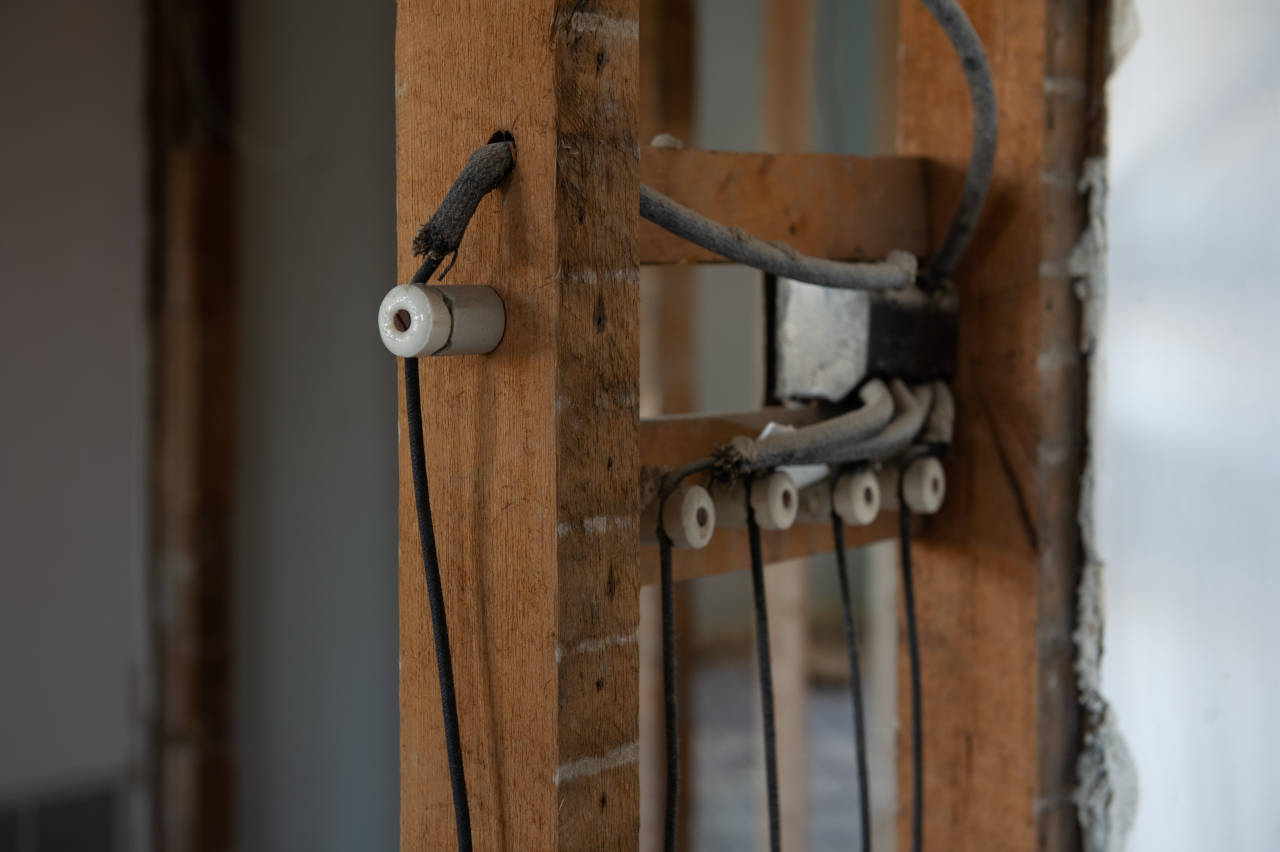Cost to Replace Knob and Tube Electrical Wiring
Knob and tube wiring was the standard method of wiring for a new home from the late 1800s right up until the 1950s. Although there is nothing inherently unsafe about knob and tube wiring, its age and two-wire construction (no ground) make it a risk with today's modern electricity usage.
Failing to upgrade the wiring could create a fire hazard when used with modern high-current appliances or when you add insulation in your home. These older wires will not meet code, and while every jurisdiction is different in whether or not they must be removed, they are not designed to tackle the heavy needs of today's modern appliances.
So unless you plan on keeping the property in retro or vintage condition, you should consider replacing the knob and tube wiring. We'll cover the cost to replace knob and tube wiring in detail below.
2025 Knob and Tube Wiring Replacement Costs
Calculate local project costs by entering your zip code.
Custom Location
| Typical Price Range | $12,000 - $15,000 |
| Minimum Price | $3,500 |
| Maximum Price | $36,000 |
Get free estimates from contractors near you.
On this page:
How Much Does it Cost to Rewire a Knob and Tube Electrical System?
The national average to remove and rewire knob and tube wiring is $12,000 to $36,000. Since this is not new wiring, your contractor will need to estimate the cost to open walls and ceilings to rewire and repair, which could easily bring the expense to $40,000 or more.
General costs typically range from $10 to $20 per square foot to remove and replace this type of wiring.
When rewiring an entire building, many access holes will need to be made. In most cases, these must be replaced with sheetrock or other wall coverings. Learn more about the cost of installing new drywall and drywall repairs to get a better idea of the requirements and subsequent costs.

The precise cost of upgrading knob and tube to modern wiring is difficult to estimate since it will vary so much based on the size and complexity of the home, the amount of wiring that needs to be replaced, the cost of labor in your area, and the skill of the electricians. Read on to learn more about these factors and how they might impact the overall price and learn more about the cost of the project on our home electrical rewiring cost guide.
Knob & Tube Wiring Removal
The extent of demolition and the difficulty of getting the old wiring out will determine how much removal will cost. Depending on how much of the old wall covering you want to preserve, some wiring might be impossible to remove.
However, most knob and tube wiring was designed to be fairly accessible. For this reason, many people made their own modifications to it over the years to help meet growing electrical demands. Because you won’t know the condition of the wiring or what modifications may have been done until the wall is opened, it’s difficult to quote exact costs or determine if all of it must be removed.
Check with your electrician or the local building inspector’s office because you might not have to remove all the wiring if it is not active. This can vary by municipality. Some may require complete removal of old wiring, but in many areas, it may be possible to leave inactive wiring in place to lower costs.
New Circuit Breaker Panel
Often, homes that have knob and tube wiring also have a legacy fuse box that will need to be upgraded to a modern circuit breaker panel. The average cost to install a new circuit breaker panel is $500 to $2,000 for a 100 amp service. The higher the amperage, the more you can expect to pay due to larger gauge wiring required, and higher amperage panels are also usually larger and have more circuits.
Cost per Linear Foot
Most electricians do not charge by the foot for this type of project, but the average works out to about $6 to $8 per linear foot and $8 to $10 for heavy-duty electrical wiring to support entertainment rooms and high-voltage appliances.
New Receptacles
Part of replacing knob and tube wiring will be upgrading the receptacles and junction boxes in the walls. Although the cost per receptacle box will likely be built into the total cost, the cost per receptacle for the hardware is usually a few dollars each.
Electric codes usually require a receptacle every 12 feet, meaning you’ll likely need three to four or more new outlets per room at around $100 – $150 per box installed.
It generally costs more for specialty circuits like ground-fault circuit interrupters (GFCI) or arc fault circuit interrupters (AFCI), which have a higher cost of around $40 – $80 per breaker. A GFCI outlet must be installed wherever there is water, like bathrooms and kitchens, and an AFCI where there are large voltage requirements on the wires, like entertainment rooms and studies with lots of computer equipment.
The average price to wire a single new receptacle is $200, but a large project like rewiring an entire house will make the per outlet price cheaper. You can get more information about outlets and receptacles on our electrical receptacle cost guide.
Knob and Tube Replacement Labor Costs
Licensed electricians typically charge $50 – $200 per hour, and modernizing the electrical system of an entire home in a retrofit is a major project, so prepare to budget a significant amount for labor. It’s common for this type of project to take days or even weeks to complete.
Since knob and tube removal and rewiring often requires cutting into the walls in many places, you might need to hire other professional contractors for plaster, sheetrock, and other repairs.
You have a few options for the project. One option is to hire a general contractor to manage the electricians and other trades working on repairs and upgrades. This is a popular option when other renovations are being done at the same time as the electrical upgrade.
An alternate option is to hire the electrician for the project directly and seek out other trades for the repairs needed after the project. This approach is often less expensive but will require more time and effort.
Some electricians will cut precise access holes, remove a piece of the wall to work, then screw that piece back onto the wall when done. In these instances, it’s easier to finish and paint the wall than to replace it, as well as less costly.
If you are unsure what your electrician will do, you can ask how they plan on dealing with things be written into the contract. This will give you an idea of how to proceed and what other professionals you may need to hire for the job.
Because the project is significant, we suggest getting several estimates for the work and comparing the options for the project. The lowest price is not always the bargain it appears to be when scrutinized. Be sure to check their license, liability insurance, and references.
All pricing information on this page is based on average industry costs, and is subject to variance for project-specific materials, labor rates, and requirements.


